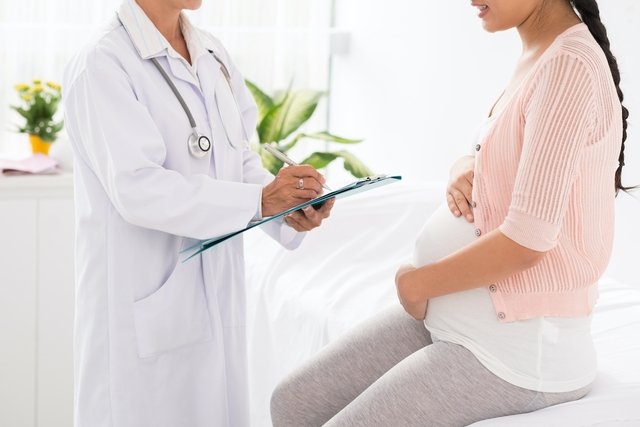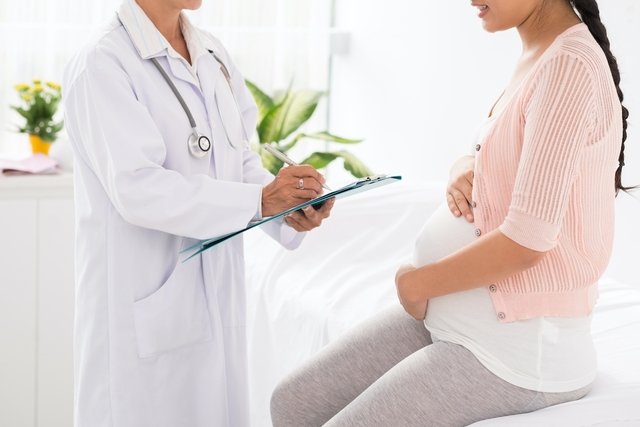Bacterial vaginosis occurs due to an imbalance in the vaginal microbiota due to hormonal changes during this period, causing a decrease in lactobacilli and the growth of bacteria naturally present in the vagina, leading to a change in vaginal pH and a grayish discharge with a strong smell.
Vaginosis in pregnancy is usually associated with the bacteria Gardnerella vaginalis or Gardnerella mobiluncus and, although it does not interfere with the baby’s development, it can increase the risk of premature birth or even the baby being born with low birth weight, for example.
Therefore, if any vaginal changes appear, you should consult an obstetrician or gynecologist to identify whether there is a problem and begin the most appropriate treatment.

Symptoms of vaginosis in pregnancy
The main symptoms of vaginosis in pregnancy are:
- Intense vaginal itching;
- White or grayish discharge;
- Foul odor, similar to rotten fish;
- Burning sensation when urinating;
- Redness in the genital region.
In most cases, bacterial vaginosis does not cause any symptoms and, therefore, many women end up discovering the infection only during a routine exam at the gynecologist or obstetrician.
Furthermore, the symptoms of bacterial vaginosis can also be confused with candidiasis and, therefore, it is very important that the diagnosis is made by a doctor, because the treatment of vaginosis and candidiasis are different.
How to confirm the diagnosis
The diagnosis of bacterial vaginosis is made by a gynecologist or obstetrician based on an assessment of the symptoms presented by the woman and a pelvic examination.
In addition, the doctor may order tests, such as a urinalysis, urine culture or analysis of vaginal discharge in the laboratory, for example, to identify the bacteria and indicate the most appropriate treatment. Understand how bacterial vaginosis is diagnosed.
How the treatment is carried out
The treatment of bacterial vaginosis during pregnancy should always be guided by an obstetrician or gynecologist and is normally carried out when the pregnant woman has symptoms or is at high risk of having a premature birth, for example.
Therefore, the treatment that may be recommended by the doctor is the use of oral antibiotics, such as clindamycin or metronidazole, for 7 days, or the application of antibiotic ointment for around 5 days. It is important that the treatment is carried out under medical supervision, as some medications, such as metronidazole, are contraindicated in the first trimester of pregnancy.
Furthermore, treatment should be carried out for as long as the doctor recommends, even if the symptoms disappear sooner.
Possible complications
The main complications of bacterial vaginosis in pregnancy are an increased risk of premature birth, a low birth weight baby and an increased risk of contracting a sexually transmitted infection, such as chlamydia or gonorrhea, which can cause pelvic inflammatory disease (PID) and make it difficult to occurrence of a future pregnancy.
Bibliography
- REDELINGHUYS, M. J; et al. Bacterial Vaginosis: Current Diagnostic Avenues and Future Opportunities. Front Cell Infect Microbiol. 10. 354, 2020
- SUBTIL, D.; et al. Early clindamycin for bacterial vaginosis in pregnancy (PREMEVA): a multicentre, double-blind, randomised controlled trial. Lancet. 392. 10160; 2171-2179, 2018
- JIN, J. Screening for Bacterial Vaginosis During Pregnancy. JAMA. 323. 13; 1324, 2020
- BAGNALL, P.; RIZZOLO, D. Bacterial vaginosis: A practical review. JAPA. 30. 12; 15-21, 2017
- McDONALD, H. M.; et al. Antibiotics for treating bacterial vaginosis in pregnancy. Cochrane Database Syst Rev. 1. CD000262, 2007

Sign up for our newsletter and stay up to date with exclusive news
that can transform your routine!
Warning: Undefined array key "title" in /home/storelat/public_html/wp-content/plugins/link-whisper-premium/templates/frontend/related-posts.php on line 12
Warning: Undefined array key "title_tag" in /home/storelat/public_html/wp-content/plugins/link-whisper-premium/templates/frontend/related-posts.php on line 13





